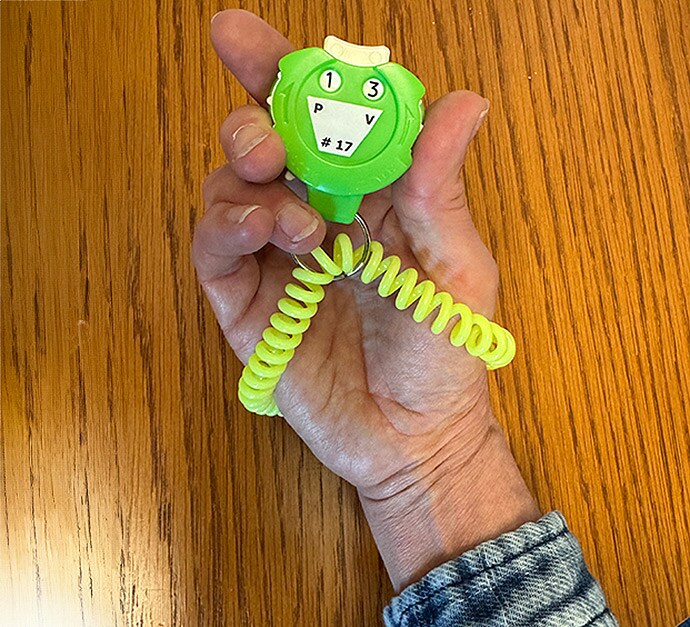Push for Safer Hospitals: Improve Violence Reporting
Do we really need more data on workplace violence to craft laws and policies to better protect healthcare workers from aggression on the job? Some experts argued that yes, such information is essential to address this thorny problem.

One is Joanne DeSanto Iennaco, PhD, APRN, professor and director of the Clinical Doctor of Nursing Practice Program at Yale School of Nursing, Yale University, in West Haven, Connecticut, and lead author of a new study in The Joint Commission Journal on Quality and Patient Safety, describing a reporting system designed to easily tally and classify the incidence of such aggression.
Iennaco said aggression exposure in healthcare settings is underreported, in part because of varying definitions of assault and violence. Her study considered aggressive events as any verbal, nonverbal, or physical behavior that was threatening or did actual harm.
"We don't know what's happening currently, and that's really my point," Iennaco said. The system tends to use sentinel events as proxy measures, including the use of patient restraints, worker injuries, or the involvement of security personnel.

"We're only measuring the most severe events. We're not learning at all about the methods that are working for workers to protect themselves. We're losing all those events that were successfully addressed because they aren't being measured," she said.
Will Professionals Complete Aggression Logs?
Given the high volume of metrics hospital professionals must deal with every day, it is worth asking whether they would resist another measure, although it only takes a few seconds to engage Iennaco's counter and then, later that day, 1 or 2 minutes to log and classify each incident.
"There will always be some people who don't want to participate, for whatever reason, but we found the nurses were excited to participate," Iennaco told Medscape Medical News. Staff participation with using the counters and logs was 65%. "We had them do it for 2 weeks, but maybe, we don't need that much data to calculate a baseline rate with an ability to generalize."
For Steven Haywood, MD, an emergency physician at Magnolia Regional Health Center in Corinth, Mississippi, physicians would want to know something tangible will come from filling out forms such as the Aggressive Incidents in Medical Settings (AIMS) Log.

"Individuals in our field have been telling our stories for quite a while," said Haywood, who was once threatened by a family member of his patient. The family member told him, "'I'm coming with a gun tomorrow. If you let her die tonight, I will shoot you,'" Haywood related.
"I have filled out multiple police reports for violence that occurred on my shifts at a previous employer. Nothing ever came of it. We have been choked and hit in the hospital. We need to get those stories out. We also need data to quantify the incidents," he said.
"Patients come into the hospital at their worst, and we're sensitive to that." However, verbal abuse against hospital staff is a daily occurrence. Violence is never acceptable, and it has become status quo. But what should be done about it? "I'm an expert in emergency medicine," Haywood replied. "We need the experts in workplace violence, like OSHA to take the lead. It really is a workplace safety issue and there have to be consequences."
Emergency room doctors and nurses, including Haywood, were on Capitol Hill on March 22 and returned in mid-April for a press briefing aimed at reminding Congress that they are still targets of unacceptably high rates of workplace violence and aggression. Two bills pending in Congress to address this issue, Workplace Violence Prevention for Health Care and Social Service Workers Act (S.1176, Sen. Baldwin) and the SAVE Act (S.2768, Sen. Manchin), propose occupational health and safety standards and violence prevention plans for healthcare organizations and federal penalties for assaulting hospital employees doing their jobs.

Emergency Nurses Association (ENA) President Chris Dellinger, MBA, BSN, RN, FAEN, agreed that violent acts in the emergency department (ED) are under-reported, but it would be hard for ED nurses to consistently report incidents as in this study.
"Your focus is on taking care of the patient in front of you," she explained. But ENA data indicate that a third of nurses have considered leaving the field because of workplace violence. "That's the number people should be talking about."
Breaking Down Aggressive Events
Iennaco's AIMS Log was completed by nurses working on five medicine units in two hospitals of different types: A community hospital and an academic medical center. It incorporated events that happened to nurses and patient care assistants, but not physicians, working on those units.
Staff were trained in the research methodology and then, over a 2-week period in 2017, were asked to carry a hand-held event counter (see picture) to record aggressive events in their daily work in real time by clicking on the counter. They were also asked to record the characteristics of each event on paper using the AIMS Log as soon as possible following the event or at least on the same day. That could be done in 1 or 2 minutes per incident, Iennaco said.
Iennaco's study also tried to quantify the impact of these aggressive events on staff. "We have developed a measure of the continuum of aggressive events, from verbal to physical, and we now know more about the consequences," she said. "My view is if we measure better, we'll have a better likelihood of being able to understand what levels of exposure are most dangerous and what kinds of events."

The aggressive events broke down as 70% verbal, 20% physical, and 10% combined. Individual staff were exposed to 1.17 aggressive events per 40 hours worked. In half of those events, workers experienced consequences such as feeling anxious or threatened, having actual pain in 5% or 6% cases. Two out of 179 aggressive events logged by the nurses involved actual physical injury. "When we look to see consequences, we need a lot more information about the exposures that led to these consequences," Iennaco said.
The log also identified the precipitating factors for these events, with the highest categories being medication administration, waiting for care, and delivery of food and drink. In three quarters of cases, staff were able to de-escalate an aggressive situation by talking to the patient. "That's what we want," she said.
Previous studies of workplace violence have documented emotional effects including posttraumatic stress disorder, anxiety, and psychologic distress, along with physical injury, Iennaco said. Healthcare workers who have been targeted by violence are less productive on the job, posting poorer clinical outcomes. They don't want to go to work. They quit work because the environment is just too toxic.
The next step for researchers is to connect the ability to count these events with their impact on the nurse or doctor, Iennaco said.
"We have learned, for example, that workers found it more difficult to cope with a verbal threat than a physical assault," she said. "We are also beginning to recognize the good work being done by staff, validating the de-escalation and other interventions that they are doing," Iennaco said.
On the Hospital Floors
Although the emergency room may be a flashpoint for many aggressive incidents, other hospital units and hospitalists also confront workplace violence.
Ishaan Gupta, MBBS, assistant professor of medicine in the Division of Hospital Medicine and a hospitalist at Johns Hopkins Bayview Medical Center, Johns Hopkins Medicine, in Baltimore, agreed that it is a problem that has long gone under-recognized. "The Iennaco study helps us understand that risk is different on every unit," he said.

Gupta is part of his hospital's interdisciplinary Workplace Violence Committee. "We're also trying to look specifically at each unit, including its layout and design. We've also talked about developing actual measures of violence, and we established a 'code green' behavioral response team that can go where there's a danger of physical harm."
Data such as the Iennaco study could help improve patient outcomes, he said. "We understand that most people don't come to the hospital to fight a doctor or nurse. It's important to understand the situations they are in and the impact of errors that happen in the hospital. At the end of the day, the goal is improving the lives of people — our colleagues and our patients. If my life is better at work, so too will be the care I provide to my patients."
The authors had no financial conflicts to disclose.
Freelance contributor Larry Beresford is a healthcare journalist in Oakland, California, with specialties in hospice and palliative care, hospital medicine, and emergency medicine services.


 Admin_Adham
Admin_Adham


